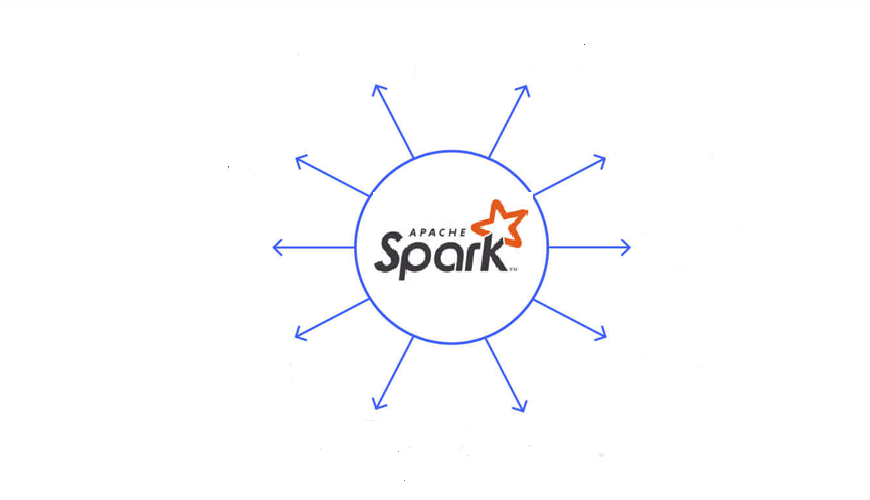
Spark SQL is one of the main components of the Apache Spark framework. It is mainly used for structured data processing. It provides various Application Programming Interfaces (APIs) in Python, Java, Scala, and R. Spark SQL integrate relational data processing with the functional programming API of Spark.
Spark SQL provides a programming abstraction called DataFrame and can also act as a distributed query engine (querying on different nodes of a cluster). It supports querying either with Hive Query Language (HiveQL) or with SQL.
If you are familiar with the Relational Database Management System (RDBMS) and its tools, then you can say that Spark SQL is just an extension of relational data processing. Big Data can be processed using Spark SQL, which is difficult to implement on a traditional database system.
Why did Spark SQL come into the picture?
Before Spark SQL, there was Apache Hive, which was used for structured data processing. Apache Hive was originally developed to run on Apache Spark, but it had certain limitations as follows:
- Hive deploys MapReduce algorithms for ad-hoc querying. We know that MapReduce algorithms lag in performance when it comes to medium-sized datasets.
- During the execution of a workflow, if the processing fails, Hive does not have the capability to resume from the point where it failed.
- Apache Hive does not support real-time data processing; it uses batch processing instead. It collects the data and processes it in bulk later.
Having outlined all these drawbacks of Hive, it is clear that there was a scope for improvement, which is why Spark SQL came into the picture.
Learn about Apache Spark from this spark training institute in Hyderabad and be a master!
Understanding Spark SQL
Spark SQL provides faster execution than Apache Hive. It uses in-memory computation where the time required to move data in and out of a disk is lesser when compared to Hive.
- Spark SQL supports real-time data processing. This data is mainly generated from system servers, messaging applications, etc.
- It does not face any migration difficulty, i.e., we can migrate or import anything which is written in Hive, without any difficulty. Whatever megastore we have used for Apache Hive can be used for Spark SQL as well.
- Querying in Spark SQL is easier when compared to Apache Hive. Spark SQL queries are similar to traditional RDBMS queries.
Now, let us understand the architecture of Spark SQL.
The architecture of Spark SQL
The architecture of Spark SQL consists of three layers as explained below:
- Language API: This layer consists of APIs supported by Python, Java, Scala, and R. Spark SQL is compatible with all these programming languages.
- SchemaRDD: An RDD (Resilient Distributed Dataset) is a special data structure with which Spark Core is equipped. As Spark SQL works on schemas, tables, and records, we can use a SchemaRDD as a temporary table. SchemaRDDs are also known as DataFrames.
- Data Sources: Spark SQL can process data from various sources. Data sources for Spark SQL can be JSON files, Hive tables, Parquet files, and Cassandra database.
Features of Spark SQL
Let’s take a stroll into the aspects that make Spark SQL so popular in the data processing.
- Easy to Integrate: One can mix SQL queries with Spark programs easily. Structured data can be queried inside Spark programs using either SQL or a Dataframe API. Running SQL queries alongside analytic algorithms is easy because of this tight integration.
- Compatibility with Hive: Hive queries can be executed in Spark SQL as they are.
- Unified Data Access: Loading and querying data from various sources is possible.
- Standard Connectivity: Spark SQL can connect to Java and Oracle using JDBC (Java Database Connectivity) and ODBC (Oracle Database Connectivity) APIs.
- Performance and Scalability: To make queries agile, alongside computing hundreds of nodes using the Spark engine, Spark SQL incorporates a code generator, a cost-based optimizer, and columnar storage. This provides complete mid-query fault tolerance.
Grasp detailed knowledge of Apache Spark by going through this extensive Spark Tutorial!
Spark SQL Libraries
- Data Source API: This is used to read/write structured and unstructured data from/to Spark SQL. In Spark SQL, we can fetch the data from multiple sources.
- DataFrame API: DataFrame API converts the fetched data into tabular columns that can further be used for SQL operations. These tables are equivalent to relational databases in SQL.
- SQL Interpreter and Optimizer: Interpreters and Optimizers are used to optimize the queries written both in Spark SQL and DataFrames. They are used to run SQL queries faster than their RDD counterparts.
- SQL Service: SQL service is used to fetch the interpreted and optimized data.

























